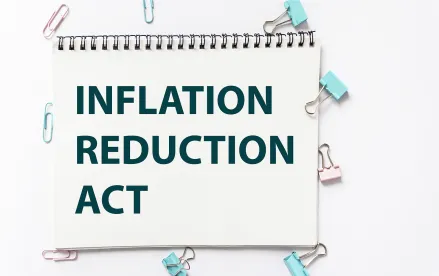The passage of the Inflation Reduction Act (IRA) in August of last year saw the introduction of a number of new and expanded tax credits aimed at boosting onshore American manufacturing. These incentives represent opportunities for manufacturing within critical industries, in particular those industries that are key players in the administration’s goal to address climate change. The incentives range from tax credits available directly to manufacturers of certain equipment, to incentives for taxpayers to purchase equipment from American manufacturers.
A new production tax credit, the Section 45X Advanced Manufacturing Tax Credit, is a credit available to manufacturers of eligible components produced within the United States and sold to an unrelated party. Eligible components include components included in wind, solar, and battery projects, such as PV cells, PV wafers, solar modules, blades, nacelles, inverters, and battery cells and modules, among many others. Credits are available on an annual basis through 2032, and credit rates vary depending on the component.
The IRA also expanded a tax credit that provides incentives for solar manufacturers, among other clean energy equipment manufacturers, for purchasing and commissioning property to build a manufacturing facility before January 1, 2025. The credit was expanded under the IRA and includes additional types of qualified investments, for up to $10 billion in total credits. The credit amount is up to 30% on investments into manufacturing facilities, and is available for certain expansions and re-equipping of existing facilities.
Another significant manufacturing-related change under the IRA incentivizes renewable energy project developers to buy equipment from U.S. manufacturers. Both the investment tax credit (Section 48 of the Code) and the production tax credit (Section 45 of the Code), which provide taxpayers with credits for certain renewable energy facilities and the production of electricity from such facilities, now include tax credit add-ons if (i) 100% of any steel or iron that is a component of the facility was produced in the United States, and (ii) 40% of manufactured products that are components of the facility were produced in the United States.
The IRA also enacted several provisions that, in certain cases, permit direct cash payments from the government and permit the sale of tax credits.
As we look ahead to 2023, we anticipate that Treasury will continue to develop guidance relating to these tax credits (many of which went into effect on January 1, 2023). We expect industry participants to be involved in that process, and to continue exploring opportunities to take advantage of these new incentives.




 />i
/>i
